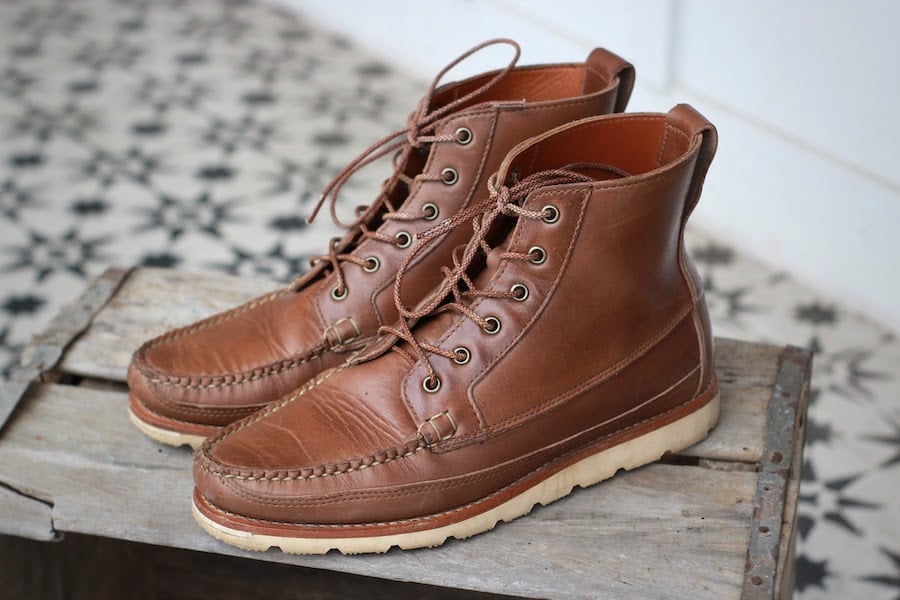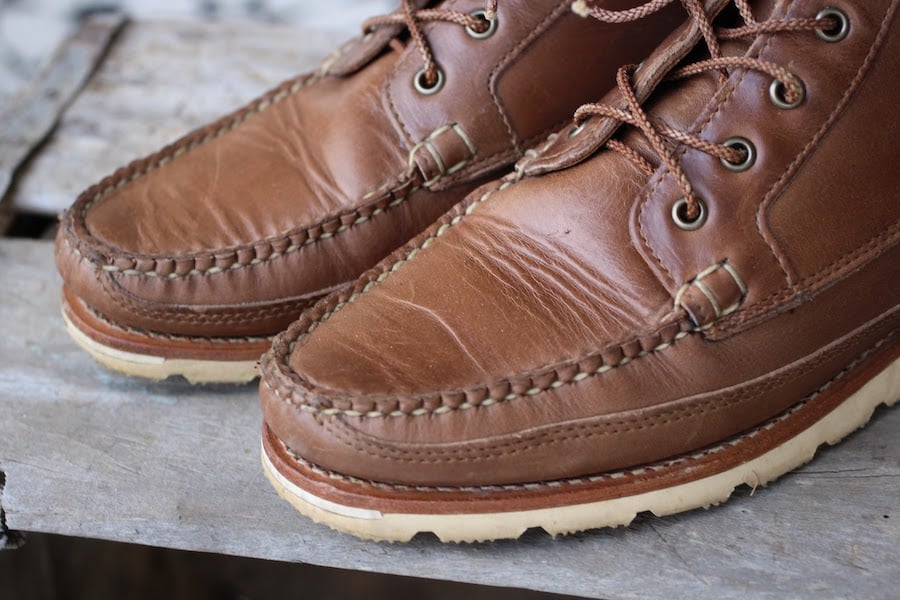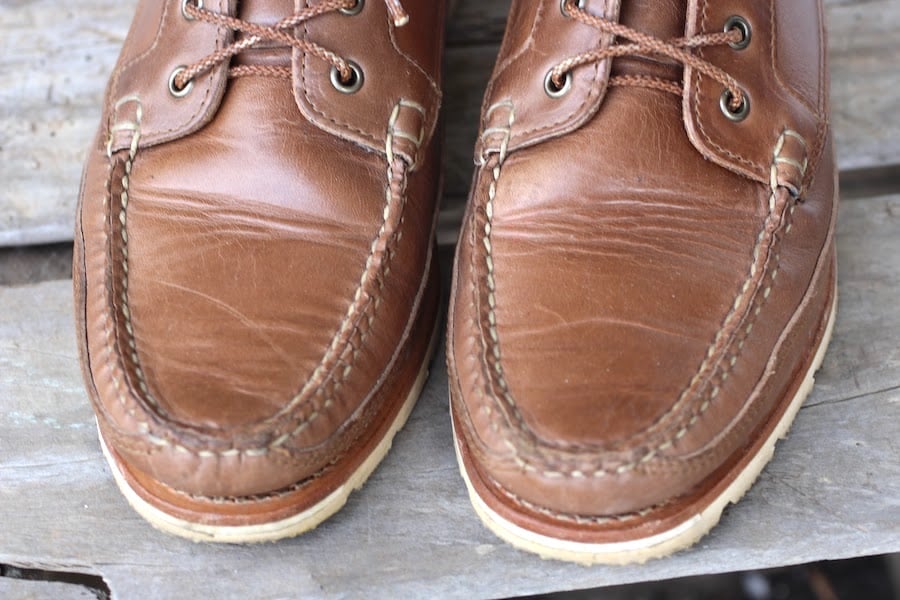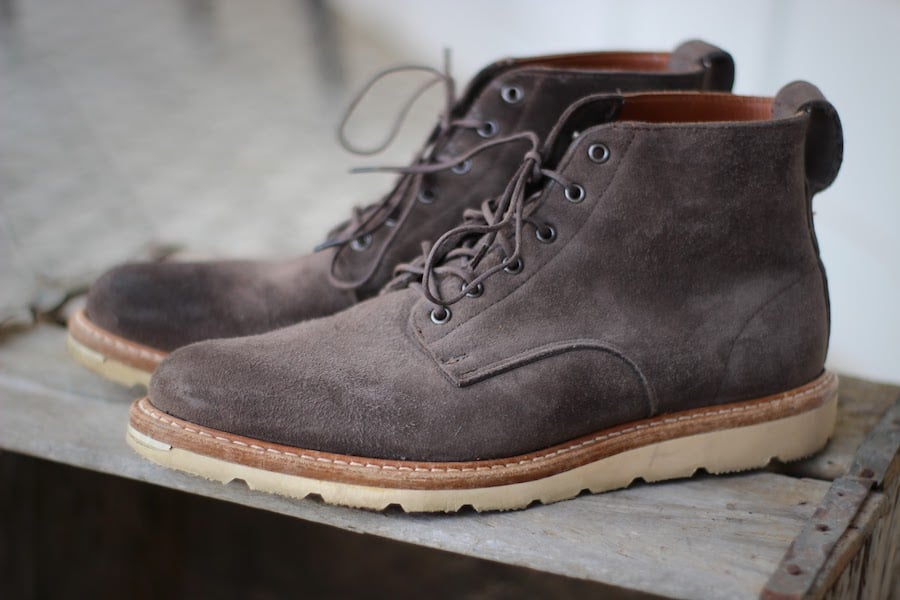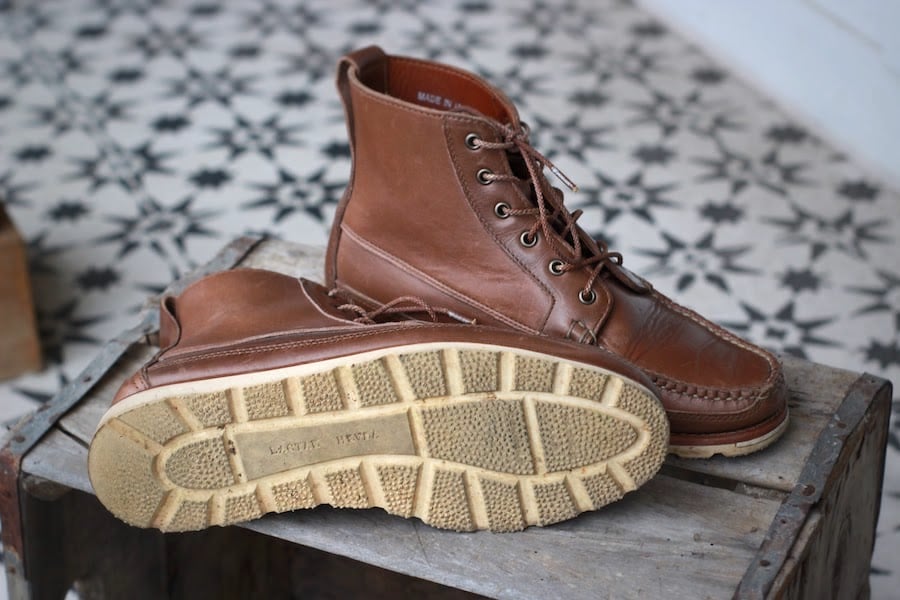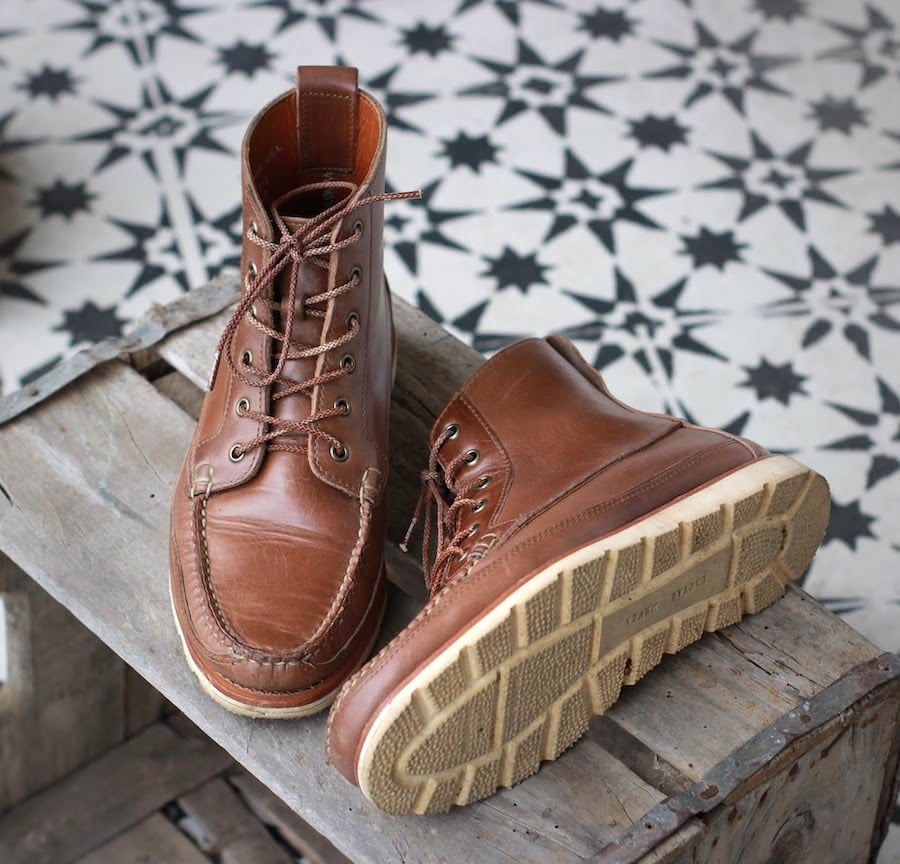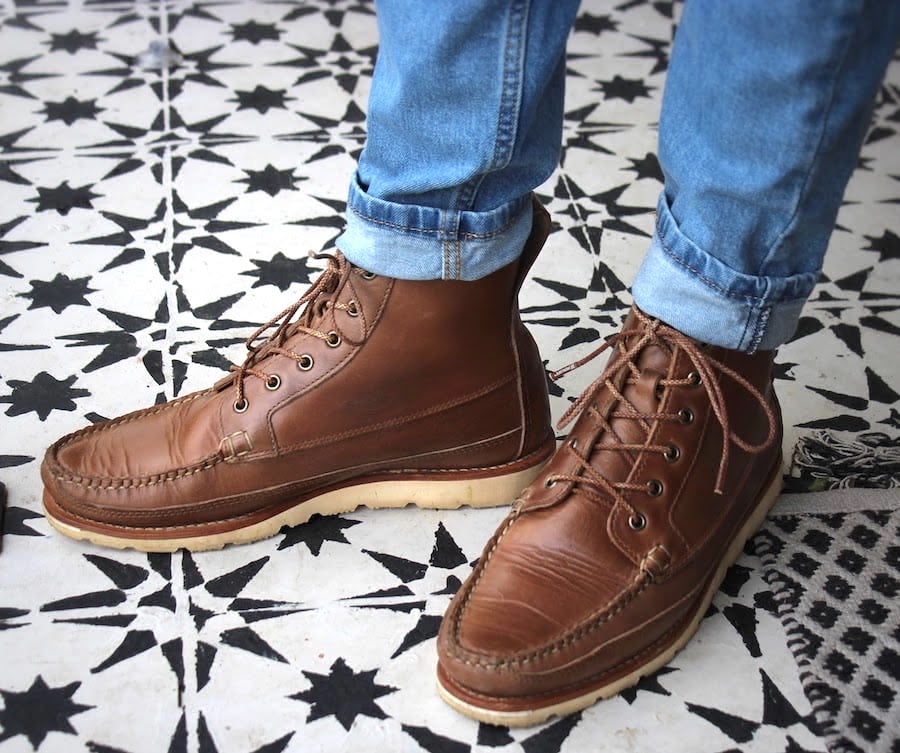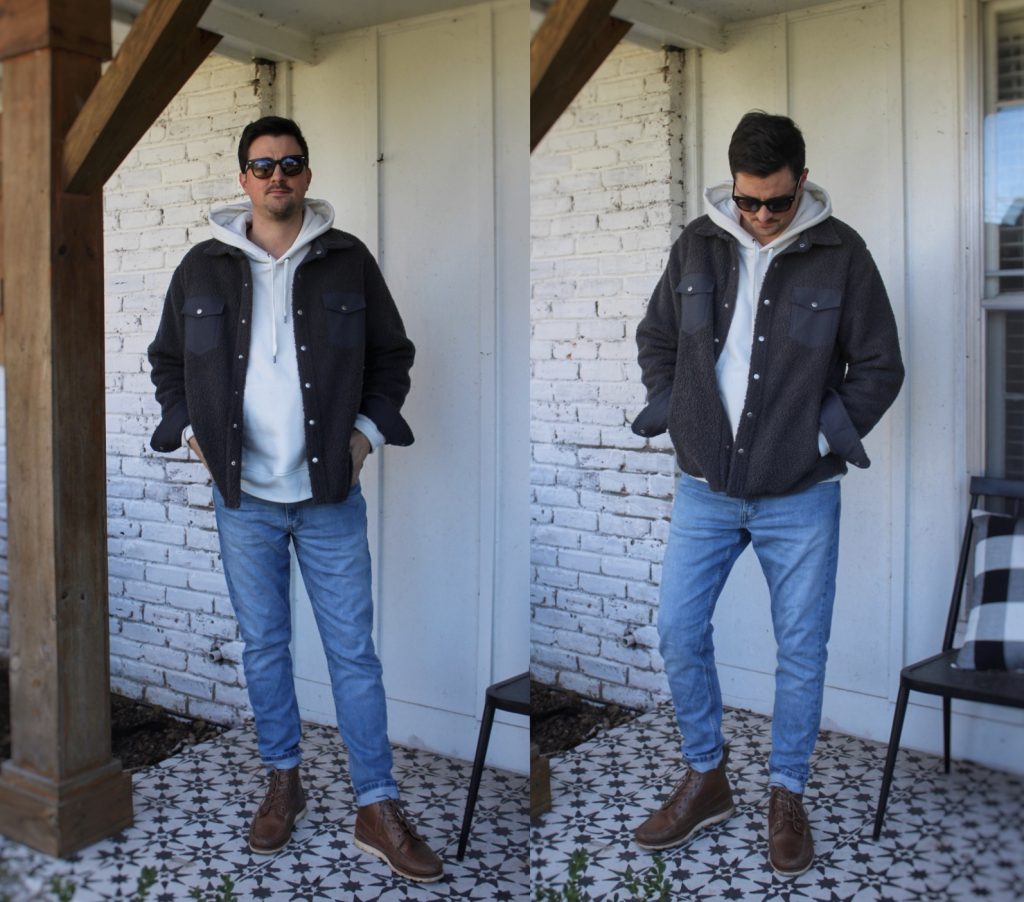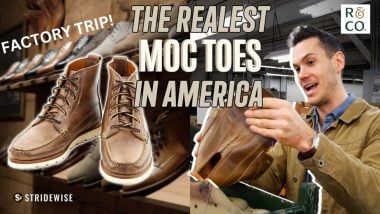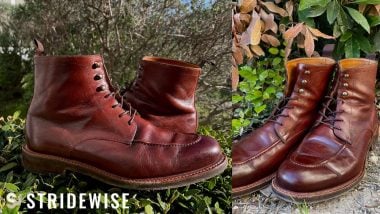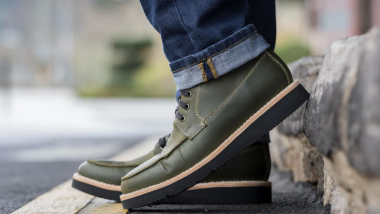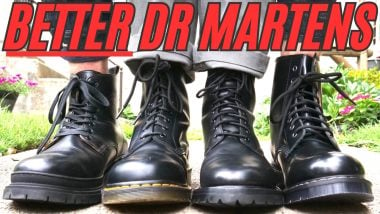Rancourt Harrison Boot Review | A Moc Toe Unlike Any Other
I have always had a genuine appreciation for unique things. Things that drift slightly from the norm, and this has influenced my collections over the years.
I am an avid watch collector, not in the multiple Rolex’s or AP’s type of category, but my current collection consists more of unique watches, modified by myself or created by small brands for their devoted followers. I like brands that focus on quality craftsmanship, unique styles which usually don’t appeal to the masses, and a value that allows you to feel like you’re getting something that would cost much more from a big name brand.
This view of collecting has melted over in my love for boots and other footwear. I tend to gravitate towards things that are slightly different, or brands that allow the consumer to feel connected to the owner and team creating the products. Rancourt and Co is one such brand.
Are Rancourt’s Boots Worth It?
Got somewhere to be? Here’s a quick summary of the pros and cons of these iconic boots.
Pros
- Made in the USA
- Independent company
- Under $400 (rare for American made boots)
- Very comfortable; little to no break in
- Unique design
- Resoleable
There are lots of pros to this boot.
The fact that these are made in America is a big bonus. Made in America does not mean that it has quality superior to others, as there are some really great brands that are producing top notch shoes and boots overseas. It does, however, feel a little better when you use your hard earned money to support a brand that is creating jobs and producing a great product here in the US.
These boots are comfortable. From the flexibility of the construction to the soft latex wedge, these things are legit.
The leather is not flimsy, though. You still have a nice thick leather upper, lining, toe box, and midsole. These will loosen up over time and conform to your feet, which will add to the overall comfort.
Cons
- Not a very versatile style
- Long order time (10-12 weeks)
- Chromexcel leather can crease easily
- Lack of speed hooks
Cons are always a bit subjective. One is the Harrison’s lack of versatility. Not that it couldn’t withstand anything you throw at it, but that it may not look totally appropriate in every situation you put it in: this is a pretty casual boot and it looks best with a pair of tapered jeans or work wear. Not a great option to pair with your slacks at the office.
Another con to some would be the creasing in the leather. It is hard to find a pair of Chromexcel boots that don’t have creases, but the less structured toe of these boots did lean them to more creasing in the forefoot than usual.
The lack of speed hooks means they take some time to put on or take off, but if that is a deal breaker for you, you can always take them to a local cobbler and have some speed hooks installed. For me, I prefer the eyelets. They keep that traditional moccasin look and don’t add any extra bulk to the top of these boots.
Rancourt, The Brand
- Founded 1967
- Based in New England
- Specializes in traditional moccasin construction
Quality boots crafted in the Northeastern United States is not a new phenomenon. If you are an avid boot enthusiast, you can probably think of several off the top of your head. A brand that doesn’t always get to the top of these lists is Rancourt & Co.
Rancourt started in Lewiston, Maine in 1967 by making hand sewn moccasins, a tradition that is still very prevalent in their modern collection. Despite some changes in ownership over the years, as of 2009, the company is back under the leadership of its founding family and continuing the tradition of making shoes and boots in the Northeastern United States. Now offering a wide range of styles from boots, loafers, oxfords and more, it is hard to go wrong!
The Harrison boot is one of my personal favorites as it combines the traditional moccasin look with modern comfort and durability. Because of this combination of hardy boot and traditional moc, it has become the brand’s flagship boot.
Rancourt’s Harrison Boot: The Look
I feel as if we are in the golden age of the moc toe boot. Of course, you have the classics like Red Wing or Alden who have been doing it since the beginning of time, but more and more brands like Parkhurst, Thursday Boots, and Grant Stone are stepping onto the scene throwing in their own versions which are appealing to those looking for rugged reliability and those who are just looking for a really cool boot.
The Rancourt Harrison boot takes it to another level. This boot might not be the first, second or even third on your mind when you think of a moc toe boot, but why not? The Harrison not only gives you the classic moc toe look, but the entire construction of the boot is a hand sewn moccasin design.
The Harrison boot gives off a very rugged, down to do anything vibe, without looking pretentious or as if the wearer is compensating for a lack of out-doors experiences or skills — this particularly is important for me. The toe box on the is relatively slim, like that of the Thursday Diplomat or Alden Indy, but still remaining very casual.
The Harrison is unique in that there are a few extra layers of leather that you don’t typically see on a moc toe boot.
The Harrison is unique in that there are a few extra layers of leather that you don’t typically see on a moc toe boot. The Vamp is wrapped around the bottom of the boot and sewn to the upper and toe box. This gives it more of a traditional moccasin look, which I will discuss much more later on. This style of construction really gives it a look that separates it from the congested crowd of moc toes.
[Further Reading: The Market’s Best Moc Toe Boots for Men]
Rancourt Harrison Boot Leather
- 3 Chromexcel leathers
- 1 kudu suede
- 1 natural veg tan
The Rancourt Harrison boot comes in several different leather options. Three Chromexcel (Black, Carolina Brown, Natural), one gray suede (Flint Kudu), and one undyed veg tan (Natural Essex).
The Natural Chromexcel is what I purchased my boots in, and I could not be more pleased. I have always loved the look of natural Chromexcel. Not too dark, not too light, just a great neutral shade of brown. Of course, this shade will change over time as it patinas, but that is all part of the charm.
My boots, like a lot of boots in natural Chromexcel do show a fair amount of creasing, particularly on the toe box. To me, this is not a problem. In fact, I think it adds to the look! Let’s face it, the best-looking boots are the ones that look like they have been worked in and worn with a purpose. For those of us, who maybe do not have the opportunity the put their boots to the ultimate test on a regular basis, a little extra help is welcomed.
In making my decision on which leather to go with for my boots, I was really having a hard time choosing between the Natural Chromexcel and the Natural Essex. Ultimately, I chose the Chromexcel as I already own a pair of boots in the Natural Essex. I will still share my thoughts and experiences with the Natural Essex leather though.
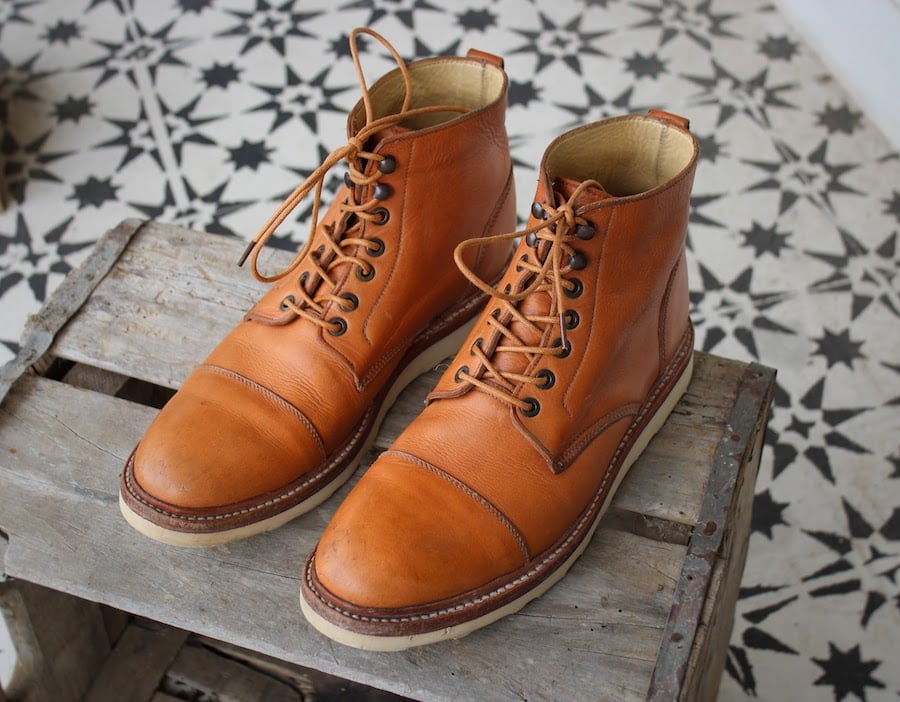
The best way for me to describe the Natural Essex leather is a blank canvas. I got a pair of John Doe 420 boots a few years ago and ordered them in Natural Essex. When they arrived, the leather is so light that it almost has a pinkish hue that reminds you of, well, skin. Hard to describe the color in person, but photos truly don’t do it justice. I’ve worn those boots for most of my outdoor activities and anywhere from hiking in the mud, to pulling my kids on a sled through the snow. The color change on those boots is so unique and one of the best-looking patinas I have seen. Currently my Natural Essex boots are a really nice orange/caramel color, but can darken to a British tan, or cognac hue with time.
That brings me back to the blank canvas. The Natural Essex will really take on a patina that is totally unique to you. If you love the look of a worn boot, and plan to put in the steps it will take to get this leather there, I think the Natural Essex is for you.
I do not want to move on before I mention the Flint Kudu though. I have another pair of Rancourt boots, a limited release Dayton boot in Flint Kudu, which is a leather just as worth mentioning as the previous two. Kudu leather is such an interesting material as each hide is unique, with many bearing the scratches and scars form the animal it came from. Nick has done some reviews on boots made with this leather, particularly the Parkhurst Spruce Kudu boot, which I highly suggest you checking out!
This suede version is unbelievably soft. Doesn’t feel like most suedes. In fact. It feels almost velvety, luxurious even. You might think it would not work with a rugged boot like the Harrison, but an important feature of the Kudu Suede is its strength and durability. Rancourt has done a fantastic write up about the leather, which you can find here.
Rancourt’s Harrison Boot Sole and Construction
- Resoleable Blake construction
- Lighter and more flexible than Goodyear welts
- French latex soles are cushiony but durable
The sole and construction of this boot is one of the key areas that sets it apart. I find it easy to get stuck in a “Goodyear Welt or nothing” type of attitude, but over the years I have come to really appreciate different types of construction, most of which are just as cobbler friendly and durable as a Goodyear Welted boot.
The Rancourt Harrison boot is hand sewn moccasin construction. This means there is not a welt that the upper is sewn to, like a GYW boot, but the vamp is wrapped fully underneath the foot bed and then sewn to the upper and toe box. A full leather midsole is then Blake Stitched on which allows a base for the wedge sole to be attached. This construction allows for an incredibly comfortable and flexible feel, while also making it easily resoleable.
there is not a welt that the upper is sewn to, like a GYW boot, but the vamp is wrapped fully underneath the foot bed and then sewn to the upper and toe box.
There was almost no break in period with these boots; they felt great right from the beginning. They are fully lined with tan cowhide, and there is a nice bit of padding at the heel which stretches down to the arch. This does provide some extra cushion, but it is not a full foam or Poron insole like you would get from a Thursday boot. I would argue that these are more comfortable though, and it really comes down to the Reltex Lactae Hevea Rally sole.
I really have to compose myself, so I do not go full on fan girl over these soles. Their look is similar to a Vibram Christy, so you have that cool wedge look, but the feel of them is very different. These soles are made in France out of 100% natural latex rubber, and according to Rancourt:
The soles go through a 12 day curing process that builds a structure of microscopic air bubbles within the soles, giving them their signature comfort. Despite the soft cushiony feel of the sole they are still highly durable.
Underfoot, these soles feel squishy, but very dense. They have a decent amount of weight and heft to them, unlike the Vibram Christy. They are also not nearly as slick. They feel very grippy on smooth surfaces and there is much more traction on the underside than a traditional wedge sole.
The comfort of these soles is hard to explain, but I will try to compare them to the Thursday Diplomat, since they are the most similar that I have personally owned. The Thursday boot has a full Poron insole on top of a full leather midsole and then the nice Vibram Christy Wedge. These are undoubtedly comfortable, but they do have a bit of an odd feel when walking. With Thursday boots, you get that comfort and squish right under your toes, then more of a solid feeling sole.
With The Harrison boot, its really the opposite. You get that sturdy leather vamp wrapping under your foot, with a leather midsole under it. This will conform to the shape of your foot over time and get more comfortable with each wear. Under that, you have the soft and comfortable Lactae Hevea wedge.
For me, I prefer the feeling of that solid leather under my foot and then the cushion after, which is a very rare thing in boots. Usually it’s a cushioned insole, or no cushion at all. Another note I want to make is that these soles are extremely quiet. If you are needing to sneak around without anyone hearing you coming, these are the boots for you. No click, not stomp, just total silence.
I love these soles so much that I sent my Rancourt Dayton boots back to have them re-soled with this, instead of the leather sole that came originally. Rancourt also offers these soles on a variety of other boot options as well as different style made out of the same materials.
If you’re interested in learning more about the soles production, you can check out Rancourt’s video below.
Can Rancourt Boots Be Resoled?
For me, the number one factor of almost all footwear I purchase, is “are they resoleable?”. If the answer is no, then it’s no longer a consideration.
Luckily, these Harrison boots are fully resoleable, which should be an easy job for your local cobbler, but I would highly recommend sending them back to Rancourt. They have an extremely reasonable price and lots of new sole options for you to choose from, including different sole material, midsole edge color, as well as an option for a full refurbishing which includes new laces, new sockliner, and reconditioning of the uppers. All this for less than it would typically cost to get a new sole put on at your local shop.
Rancourt Harrison Boot Sizing and Fit
- 4 widths available
- Order true to size
Sizing is an area where Rancourt offers more options than most. For the Harrison boot, they offer B, D, E and EE widths, which is extremely beneficial for those of us with odd foot shapes and sizes. For myself, I have a very high instep, so I typically have to get an E or EE to fit comfortably.
The Harrison boot uses Rancourt’s 2592 last, which is longer and has a broader toe box than most of their other boots. My first pair of Rancourt boots I purchased in a size 10, and although they are comfortable, they are tight if I wear thicker socks. For the Harrison, I went with a 10E and they fit like a dream. Plenty of room in the instep, the toe box is very comfortable, and no excessive heel slip or blisters to speak of.
Rancourt’s lasts can fit very differently, with some running true to size, other running ½ small even, which is rare to see in boots! Luckily, they have a very nice sizing guide on their website with a printable Brannock device that should help you with any fit questions.
Rancourt Harrison Boot Price
- $358
The Harrison boot in all five leather options is $358.00. That puts it a good bit outside of the value boot market, but for a Made in America boot, it’s very reasonable. Not only is it made in the US, but the majority of it is hand sewn! That is not something you see very often, especially at this price point.
[Further Reading: The 16 Best American Made Boots You Should Know About]
Wrapping Up
In conclusion, the Harrison boots are comfortable, stylish, durable, and priced well. The moccasin style may not be for everyone, but if you’re looking for a boot that stands out in a world of moc toes and workwear boots, these are a great option!

